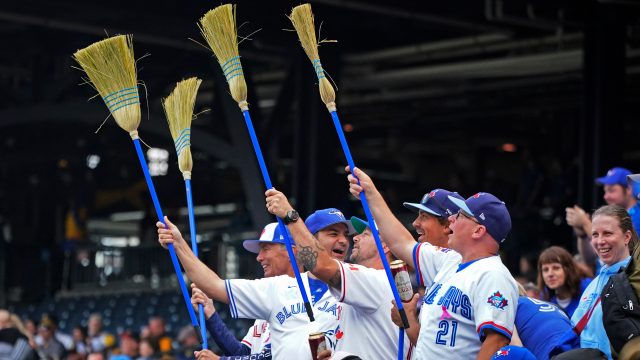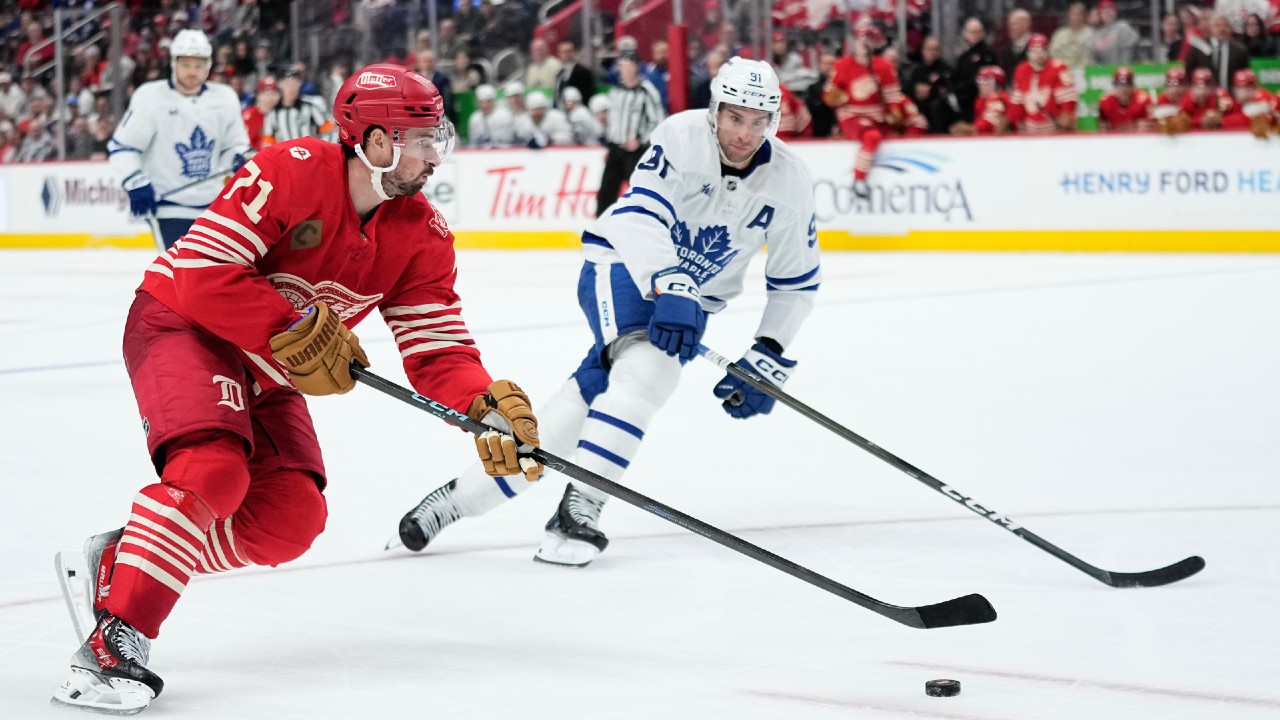
PITTSBURGH — Last Tuesday, as he searched for any way out of the deep slump that had him hitting .122/.244/.176 over a 21-game stretch, Daulton Varsho pulled up some video on his phone from his college ball days at the University of Wisconsin-Milwaukee.
Things came so much easier at the plate back then. Varsho hit .381 as a sophomore and raked his way to a 1.113 OPS with 28 extra-base hits over 54 games in his junior year before the Arizona Diamondbacks drafted him in 2017. What was it that allowed him to have so much success? What was he doing at the plate then that he was missing now?
Turned out it was actually what he wasn’t doing. There was no toe tap in his swing. Only a small leg kick — the same one he had when he posted an .899 OPS at double-A in 2019. The same one he toyed with in 2021 and ‘22 when he was struggling at the plate. The same one you might have seen him trying out only a few months ago in spring training.
“I’m a tinkerer. I try to do a lot of different things,” Varsho says. “Obviously, I’m a feel hitter. So, when you’re not feeling what you want to feel, you have to try something else. And this was kind of an athletic move for me to try to just find that feel again. And just be able to do it. And it’s working out.”
No kidding. Literally the night he eliminated the toe tap and brought back his leg kick, Varsho went 2-for-4 with a double and home run. The next night it was a single and a homer. The night after that? Two more knocks.
In all, Varsho is batting .458/.462/.958 over six games since making the swing adjustment. His 11 hits — six of them for extra-bases — in that span are the most he’s ever had in a six-game stretch since his MLB debut in 2020. Sunday, he hit a ball clear out of PNC Park. What a difference a little leg kick makes.
“I’ve done this move before. I knew it was an option. But it wasn’t until I was going through all that old film that I was like, ‘All right, I think I need to get back to it and feeling athletic in the box again instead of feeling robotic,’” Varsho said. “That’s the biggest thing for me — I’m just trying to feel athletic in the box. And, obviously, trying to square up some more baseballs.”
That’s been the thing that stood out most starkly through Varsho’s struggles earlier this season. He was still getting to plenty of pitches, running a career-high 78.9 per cent through the end of April ranked within the top half of the league. But his 22.5 per cent hard-hit rate was within the bottom quarter; and his 84.1-m.p.h. average exit velocity was a sixth percentile mark.
A dangerous hitter who’s demonstrated an ability to hit balls over 110-mph each of the last three seasons, Varsho wasn’t finding ways to tap into that raw power often enough. When they slowed down video of his swing, Blue Jays hitting coaches noticed Varsho’s hands were getting stuck in the middle of his load. They weren’t pulling back far enough to carry force through the zone. For whatever reason, the toe tap was disconnecting his swing.
“I’m trying to hit a lot of pitches and be able to be on time for a lot of things. And, obviously, I’ve backed a lot of pitches up too much in the early going here,” Varsho said. “I needed to find a way to be more athletic in the box — to allow myself to adjust to different pitches and hit the ball hard. I’m trying to keep it more simplified instead of trying to create a step-to-step process.”
And Varsho felt that immediately with the swing change. Even though he flew out in his first plate appearance, he did so by working a full count, attacking a good pitch to hit, and hitting it hard to the opposite field at 98.2-mph off his bat. Jogging back to the dugout, Varsho felt good about the out he’d made.
His next time up? Varhso lined the first pitch he saw into left-centre at 104.2-mph for a double. And the time after that? He crushed a pitch 406-feet:
“I think with Daulton, [the leg kick]just allows him to do use his bat speed a little bit more with what he’s doing,” said Blue Jays manager John Schneider. “Watching his swing, it looked like he was almost stuck at times. And I think you see some chases and some pop-ups. It’s tough to be really good when you’re stationary, when you’re stagnant. And I think this frees him up a little.”
There were certainly some chases and some pop-ups over the last several weeks for Varsho, particularly against elevated fastballs on the inner half. And the league notices things like that. Here’s where pitchers have been locating their fastballs against Varsho this season:
[Varhso fastballs heat map]
Of course, Varsho knows there’s a hole in his plate coverage there. He’s lived it. And there’s no leg kick silver bullet that’s going to allow him to get his barrel to pitches in that location. Rather, he’s hoping his new-old mechanics will help him see those pitches better — or at least for a fraction of a second longer. And, ideally, lay off of them more consistently.
“That’s not a pitch you want to hit. You don’t want to hit what you’re weak at,” Varsho said. “So, if a pitcher locates three up-and-in, then I’m going to tip my cap and walk right back to the bench knowing that, ‘OK, he did his job.’ That happens when a guy’s on and he’s able to locate. But for a lot of guys, making them do that three times in a row — it’s pretty hard.”
That’s Varsho’s mindset. If a pitcher can hit that spot three times, good for him. Varsho will take those strikeouts if they happen. It’s the occasions when a pitcher misses while trying to hit that spot that Varsho wants to be ready for. Like this one on Sunday, when Roansy Contreras tried to hit that spot with a heater but let the pitch leak back out over the plate:
“You’ve just got to understand that you have to look for your pitch — not always their pitch. Pitchers are going to make mistakes. They’re going to make them over the heart of the plate,” Varsho says. “And you just have to capitalize when you see it.”








